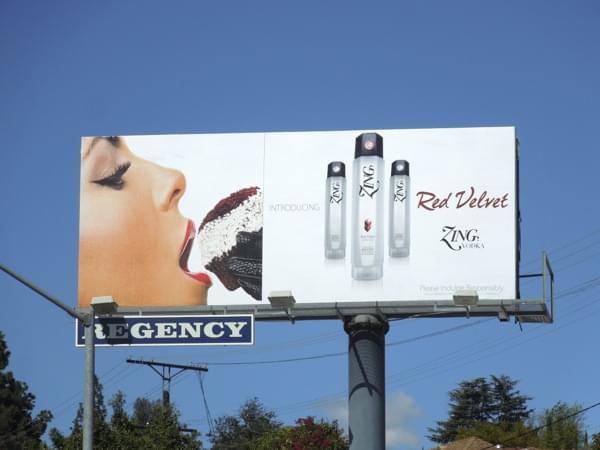
There are numerous methods for measuring OOH media effectiveness, usually in relation to people viewing an OOH compared to people who have been impressionable to traditional media such as print, radio, and TV advertising. OOH metrics often include demographic and psychographic information to help advertisers determine who is being exposed to advertising, rather than how many people are being accounted for. OOH measurements are more concerned with the quality of eyes, rather than the quantity of heads.
The OOH landscape is expansive at the moment, and it works. That’s why we keep doing it. But you have to be able to show your clients the analytics that can back up your absolute trust in the success of the medium. Many people think it’s better to use direct mail or newspaper adverts, because they are seemingly easier to measure, but OOH is perfectly capable of delivering tangible results.
Measuring Your Audience
There are two main considerations with billboard and poster advertising: what is the size of the potential audience for your displays and how many of those people actually saw your ad.
Then there are metrics that logically follow these questions: how many of those exposed to your messages were driven to engage with your brand and has there been a measurable impact on sales.
Of course, we are talking about measuring an outdoor advertising campaign that is in an ideal location, targeting the chosen audience demographic, with the right message and has a strong CTA (call to action).
Some acronyms used to define this kind of measuring are:
- DEC: Daily Effective Circulation – number of vehicles and pedestrians that pass a billboard per day
- OTC: Opportunity to Contact – how many people could walk past and see your outdoor advert
- VAC: Visually Adjusted Contact – number of people who saw the advert during the outdoor campaign
Now, you may ask, how has sales growth been affected during the run of the campaign?
One can access the OTC and DEC mobility figures by:
- Using GPS tracking devices that are carried by survey participants
- Travel diaries
- Recall surveys of the previous day’s movements in the area
- Transport planning data like commuting data
- Road traffic counts
- Government surveys
- Census data
- Data on leisure activity participation
Measuring Effectiveness
An obvious way to measure the effectiveness of outdoor advertising is to take a metric like sales and then analyze the performance of sales prior to the outdoor ad, during the course of the outdoor ad, and after the outdoor ad has been taken down. Has there been a noticeable increase? The difficulty here is working out if there are other factors that may have created a spike in sales. If your brand has two separate campaigns, such as outdoor and online, then the measurements may not be as easy to calculate. However, you can measure the ROI of your outdoor advertising campaign during the course of its duration. What if your outdoor campaign is extremely successful but your online campaign is hurting the sales? It would be very hard to accurately measure outdoor advertising effectiveness in this scenario. A much better scenario would be to only run a single outdoor campaign and keep all other brand activity stable. The results of the campaign would be a lot clearer to measure.
Vouchers and Slogans
There are other techniques for measuring effectives, and they take the shape of ad-specific coupon codes, discount vouchers, URLs, QR codes, etc. If they are limited to the outdoor ad itself, then any engagement can be measured with a large degree of certainty that the results reflect the effectiveness of the ad.
The use of slogans in an outdoor ad are very important in seeing ad effectiveness, as they are true to the individuality of the OOH. Audiences are likely to google slogans that make an impact on them, gaining valuable insight into how memorable your messaging is, and the extent to which it is driving engagement.
If you have a memorable tagline or slogan attached to your outdoor campaign, then you see in your analytics how many times those keywords are being typed into a search engine. This is a measuring tool, and kind of a measuring hack, that advertisers can use in taking something outdoors and turning it into an online scale.
Sometimes a brand impact can happen only momentarily, and the consumer is unable to remember the exact URL code when they arrived back home. They will start playing around with keywords surrounding the nature of the advertisement. These keyword phrases could show up in your analytics. Keeping an eye out for them is a strong indictor that a consumer is taking action and showing interest after seeing the OOH.
Continue Measuring
Understanding the impact your outdoor ads are having is particularly important for small businesses. Multi-channel campaigns require a larger budget, so you can use these strategies to help future measurements:
- URL/ landing page tracking. Use Google analytics to measure how many people visited your site.
- Promo codes
- Keyword tracking
- Social media tracking. A great tip for measuring billboard effectiveness is to create a hashtag that is unique to your outdoor ad. This creates quality social media engagement.
There are many ways to measure the success of your outdoor ads. The key thing is to find ways to track your audience’s journey from exposure to your outdoor ads to their continued sales adventure.
Outdoor advertising is still one of the most valuable marketing mediums to build brand recognition and familiarity in a short span of time. As commuters travel throughout a city filled with OOH ads, you can measure their influence and importance to see just how effective everything went.





